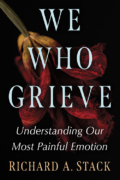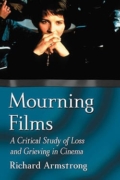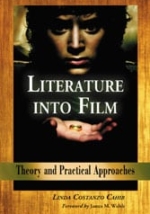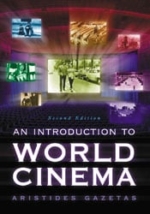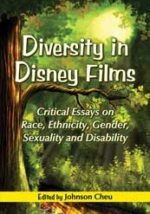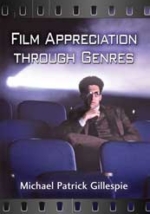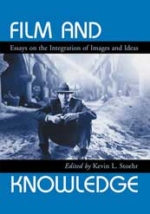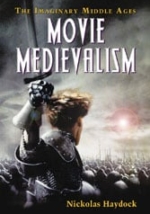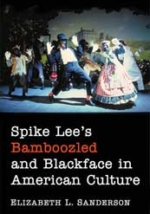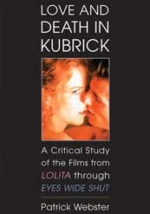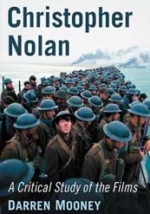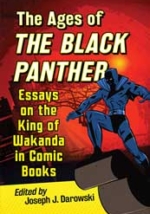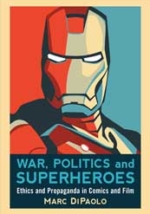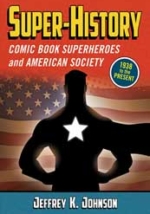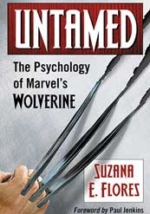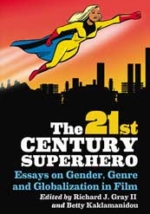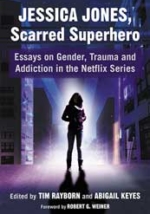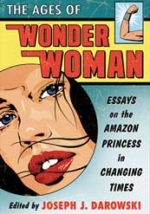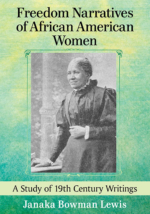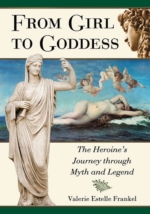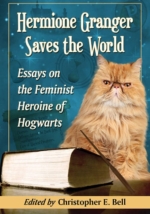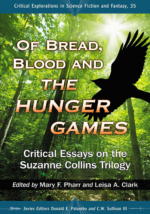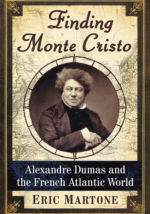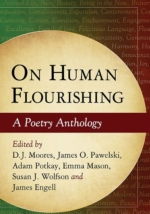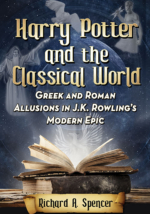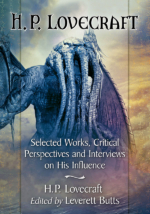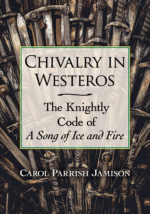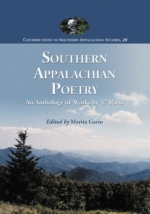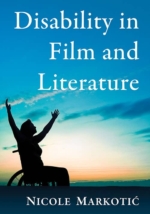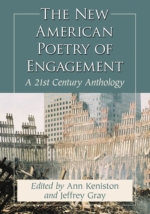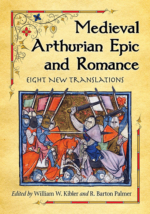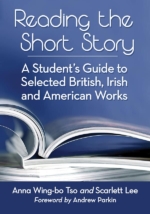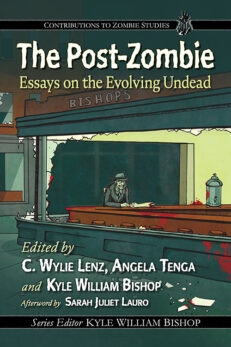We get it: someone in your household wants to bring in a tree while another hasn’t put away the Halloween decorations yet. We suggest using this liminal time to get started with your holiday shopping (and reading). Many of our readers look forward to our traditional post–Thanksgiving holiday sale to fill their shelves, nightstands and gift bags. This year, instead of waiting around for Black Friday, we’re opening up early access to you, our loyal readers and followers, as a way of saying “thank you!” for celebrating with us all year round. From now through Cyber Monday, November 28, get a Santa–sized 40% off ALL titles with coupon code HOLIDAY22! Don’t delay, because when early access ends, the discount will drop to the standard 25%. Happy reading!
Category: Games & Hobbies
New Chess Catalog and Sale
 McFarland has long served the chess scholar and collector, and our line of scholarly books about chess reflects our roots in more ways than one: chess was one of our earliest lines, and even today our chess books are often published in time-honored, cloth-covered library binding (so-named because it was once the standard for durable library books). Browse our chess catalog for new books and old favorites, and, through the end of August, get 25% off all chess books with coupon code CHESS25.
McFarland has long served the chess scholar and collector, and our line of scholarly books about chess reflects our roots in more ways than one: chess was one of our earliest lines, and even today our chess books are often published in time-honored, cloth-covered library binding (so-named because it was once the standard for durable library books). Browse our chess catalog for new books and old favorites, and, through the end of August, get 25% off all chess books with coupon code CHESS25.
Gaming Catalog and Sale
 As the Olympic Games and our sale wind down (get 25% off for one more week with TOKYO25!), we turn our attention to a different sort of games—video, tabletop, LARP and more! Browse our latest catalog of gaming books and, through the end of August, get 25% off all gaming books with coupon code GAMING25!
As the Olympic Games and our sale wind down (get 25% off for one more week with TOKYO25!), we turn our attention to a different sort of games—video, tabletop, LARP and more! Browse our latest catalog of gaming books and, through the end of August, get 25% off all gaming books with coupon code GAMING25!Fall 2021 New Books Catalog Available Now
 Our Fall 2021 new books catalog is now available—click to see what our authors have in store for the coming months!
Our Fall 2021 new books catalog is now available—click to see what our authors have in store for the coming months!
Women’s Studies Sale and New Catalog
 Women made 2020 a banner year for diversity and inclusivity. In sports, representation on and off the field erupted with the leadership of Kim Ng, Sarah Fuller and Katie Sowers. Scientists Emmanuelle Charpentier and Jennifer A. Doudna jointly earned the Nobel Prize in Chemistry. And in politics, women like Cori Bush, Sarah McBride, Yvette Herrell and others were elected to ever-diversifying legislatures, while Kamala Harris ascended to the highest elected position a woman has yet to hold. To honor Women’s History Month and to nurture the path forward, we’re offering 20% off our catalog through March 31st with coupon code WOMEN20.
Women made 2020 a banner year for diversity and inclusivity. In sports, representation on and off the field erupted with the leadership of Kim Ng, Sarah Fuller and Katie Sowers. Scientists Emmanuelle Charpentier and Jennifer A. Doudna jointly earned the Nobel Prize in Chemistry. And in politics, women like Cori Bush, Sarah McBride, Yvette Herrell and others were elected to ever-diversifying legislatures, while Kamala Harris ascended to the highest elected position a woman has yet to hold. To honor Women’s History Month and to nurture the path forward, we’re offering 20% off our catalog through March 31st with coupon code WOMEN20.
Fall 2020 New Titles Catalog Available Now
 Our fall New Titles catalog is now available, featuring 184 forthcoming books from our authors. Browse now!
Our fall New Titles catalog is now available, featuring 184 forthcoming books from our authors. Browse now!
New to Kindle, March 2020
The following titles are now available on Kindle:
|
A Century in Uniform: Military Women in American Films
|
|
African American Entertainers in Australia and New Zealand: A History, 1788–1941
|
|
Apocalypse TV: Essays on Society and Self at the End of the World
|
|
Apocalyptic Ecology in the Graphic Novel: Life and the Environment After Societal Collapse
|
|
Autogenic Training: A Mind-Body Approach to the Treatment of Chronic Pain Syndrome and Stress-Related Disorders, 3d ed.
|
|
Baseball in Europe: A Country by Country History, 2d ed.
|
|
Chasing the Bounty: The Voyages of the Pandora and Matavy
|
|
Colonels in Blue—Missouri and the Western States and Territories: A Civil War Biographical Dictionary
|
|
Electric Trucks: A History of Delivery Vehicles, Semis, Forklifts and Others
|
|
Ethics After Poststructuralism: A Critical Reader
|
|
Film History Through Trade Journal Art, 1916–1920
|
|
Final Battles of Patton’s Vanguard: The United States Army Fourth Armored Division, 1945–1946
|
|
George “Mooney” Gibson: Canadian Catcher for the Deadball Era Pirates
|
|
Girl of Steel: Essays on Television’s Supergirl and Fourth-Wave Feminism
|
|
Hollywood’s Hard-Luck Ladies: 23 Actresses Who Suffered Early Deaths, Accidents, Missteps, Illnesses and Tragedies
|
|
Italian Crime Fiction in the Era of the Anti-Mafia Movement
|
|
Japan’s Spy at Pearl Harbor: Memoir of an Imperial Navy Secret Agent
|
|
Joe Quigley, Alaska Pioneer: Beyond the Gold Rush
|
|
John Derek: Actor, Director, Photographer
|
|
Kenny Riley and Black Union Labor Power in the Port of Charleston
|
|
Managing Organizational Conflict
|
|
Nick McLean Behind the Camera: The Life and Works of a Hollywood Cinematographer
|
|
Parenting Through Pop Culture: Essays on Navigating Media with Children
|
|
Philip K. Dick: Essays of the Here and Now
|
|
Quaker Carpetbagger: J. Williams Thorne, Underground Railroad Host Turned North Carolina Politician
|
|
Rhode Island’s Civil War Dead: A Complete Roster
|
|
Rosalie Gardiner Jones and the Long March for Women’s Rights
|
|
Rosenblatt Stadium: Essays and Memories of Omaha’s Historic Ballpark, 1948–2012
|
|
Sacred and Mythological Animals: A Worldwide Taxonomy
|
|
Sailing Under John Paul Jones: The Memoir of Continental Navy Midshipman Nathaniel Fanning, 1778–1783
|
|
Section 27 and Freedman’s Village in Arlington National Cemetery: The African American History of America’s Most Hallowed Ground
|
|
Sicily on Screen: Essays on the Representation of the Island and Its Culture
|
|
Springsteen as Soundtrack: The Sound of the Boss in Film and Television
|
|
Taking Fire!: Memoir of an Aerial Scout in Vietnam
|
|
The 6th Michigan Volunteer Infantry in the Civil War: A History and Roster
|
|
The Civil War in the South Carolina Lowcountry: How a Confederate Artillery Battery and a Black Union Regiment Defined the War
|
|
The General Aviation Industry in America: A History, 2d ed.
|
|
The Man Who Made Babe Ruth: Brother Matthias of St. Mary’s School
|
|
The Showgirl Costume: An Illustrated History
|
|
The USS Swordfish: The World War II Patrols of the First American Submarine to Sink a Japanese Ship
|
|
The Women of City Point, Virginia, 1864–1865: Stories of Life and Work in the Union Occupation Headquarters
|
|
Themes in Latin American Cinema: A Critical Survey, 2d ed.
|
|
Understanding Nazi Ideology: The Genesis and Impact of a Political Faith
|
|
Virtual Tribe: Indigenous Identity in Social Media
|
|
Why the Axis Lost: An Analysis of Strategic Errors
|
2020 Women’s Studies Catalog Now Available
 Celebrate Women’s History Month with our new women’s studies catalog!
Celebrate Women’s History Month with our new women’s studies catalog!
2020 African American Studies Catalog Now Available
 Click here to browse our newest African American Studies catalog!
Click here to browse our newest African American Studies catalog!
CONFERENCES: Upcoming MLA and PCA events
McFarland is exhibiting at a number of regional and national conferences in the coming months, and conferees are encouraged to take the opportunity to peruse our books and meet an editor. Schedule an appointment by emailing us in advance (Layla Milholen, Gary Mitchem, or Dré Person), or stop by the McFarland booth in the exhibit room for a casual conversation with an editor.
Popular Culture Association in the South Sept 26-28, Wilmington, NC, Layla Milholen
Association for the Study of African American Life and History Oct 3-5, Charleston, SC, Dré Person
Midwest Popular Culture Association Oct 10-13 Cincinnati, OH, Layla Milholen
American Folklore Society Oct 16-19, Baltimore, MD, Gary Mitchem
South Central Modern Language Association Oct 24-26, Little Rock, AR, Gary Mitchem
Mid-Atlantic Popular Culture Association Nov 7-9, 2019, Pittsburgh, PA, Gary Mitchem
Film and History Nov 13-17, Madison, WI, Dré Person
National Women’s Studies Association Nov 14-17, San Francisco, CA, Layla Milholen
South Atlantic Modern Language Association Nov 15–17, Atlanta, GA, Gary Mitchem
American Philosophical Association Jan 8-11, Philadelphia, PA, Dré Person
Modern Language Association Jan 9-12, Seattle, WA, Gary Mitchem
Cinema & Media Studies
Comics & Graphic Narratives
Literature
Classic Home Video Games Sale
 Through Sunday, July 7, get 20% off all Classic Home Video Games books by author Brett Weiss with the coupon code ClassicGames!
Through Sunday, July 7, get 20% off all Classic Home Video Games books by author Brett Weiss with the coupon code ClassicGames!
Classic Home Video Games, 1972–1984: A Complete Reference Guide
Classic Home Video Games, 1985–1988: A Complete Reference Guide
Fall 2019 New Books Catalog Available Now
 Our Fall 2019 new books catalog is now available—browse our authors’ new and forthcoming titles today!
Our Fall 2019 new books catalog is now available—browse our authors’ new and forthcoming titles today!
McFarland 40th Anniversary Sale
 We’re turning 40, and we’re celebrating with a special fortieth anniversary sale! Through June 30, get a 25% discount on ALL books when you use the code ANN2019. And if you’ll be in our area (Ashe County, North Carolina, in the beautiful Blue Ridge Mountains), we’d love to see you at our open house event on Friday, June 14. Thank you for supporting our first 40 years—we look forward to celebrating many more birthdays with you.
We’re turning 40, and we’re celebrating with a special fortieth anniversary sale! Through June 30, get a 25% discount on ALL books when you use the code ANN2019. And if you’ll be in our area (Ashe County, North Carolina, in the beautiful Blue Ridge Mountains), we’d love to see you at our open house event on Friday, June 14. Thank you for supporting our first 40 years—we look forward to celebrating many more birthdays with you.
McFarland Turns 40

On June 14, 2019, McFarland will celebrate its fortieth anniversary with an open house party. From noon to five, our campus at 960 Hwy 88 W, Jefferson, NC will be open to the public with finger food, conversation and tours available, and many of our authors will be in attendance. To stay up-t0-date with event information, follow our event page. Below is a brief company history, with personal thoughts, by founder and editor-in-chief Robert Franklin.
McFarland Publishers Now Forty Years Old
by Robert Franklin
McFarland’s history (founder, Robbie Franklin, me): My close friends Biff and Alicia Stickel were burned out special ed teachers in Connecticut, early 70’s. What to do? Back to the land! They (and their little daughter Maranatha Shone Stickel) drove south till they loved the vibe and the scenery and wound up living on Peak Road from 1972 through part of 1978 (and birthing Micah Stickel). Alicia played piano at the local Baptist church and they were cofounders of the Creston Co-op. I visited them in ’72 (instantly fell for the land and people, the forefinger car salute, the almost drinkable river) and again every year after, and when wife Cheryl Roberts came into my life in 1975, we visited. Soon I was bragging about Ashe County to everybody – “If your car breaks down, the very next person to come along will stop and ask if you need help.” I hope a few readers can recognize the Stickels’ name (he goes by Richard now; they live in Toronto). They are the reason McFarland was begun in Ashe County. We present band of publishers, about fifty in number, owe them great honor.
I did not learn till after we moved here in 1979 that my Revolutionary War ancestor Lieutenant Robert McFarland, after whupping the king at Kings Mountain, lived up here in the 1790s. He then went overmountain to become the first ever sheriff of Greene/Washington County, Tennessee. (I was born in Memphis.)
McFarland & Company, Inc., Publishers is our official name. Founded in April 1979 right here. I had been the executive editor of a smallish scholarly publisher in New Jersey; my mentor/boss/friend Eric Moon (a charismatic Brit) knew before I did it was time for me to go off on “my own” (very misleading words!). The local Ashe County newspaper was failing by 1978 and at first I thought, o.k., I’m an editor type, maybe I can start up a new one. Between summer and Christmas the local fellow David Desautels decided the same thing and very successfully started The Jefferson Times. We became friends and McFarland’s earliest two or three books (including a biography of Soviet leader Brezhnev) were typeset using off-hours time on that new newspaper’s equipment. Katy Zell Taylor was our first fulltime employee (Ashe Central H.S. yearbook editor!) and did a lot of typesetting and correcting. Dental Care in Society was our first published book, in 1980 (ask me some day).
After deciding up in New Jersey to stay with book (versus newspaper) publishing, I phoned the Jefferson Post Office in February 1979 to set up a box number mailing address – they said people had to apply in person. Whew! So I flew from Newark to Tri-Cities, Tennessee (what did I know?), rented a car, drove to Jefferson (hours!), filled out a form, got back in the car, drove back to Tri-Cities, and got back home not long before day was done.
A couple of months later, on April 1, 1979, Cheryl and I packed our former life stuff (including hundreds of books—heavy!) in a small U-Haul, attached it to our VW bug, and began to drive south, the Stickels’ Ashe County on our minds.
My ninth-grade homeroom friend (Toledo, Ohio), Mike Strand, had helped with some financial and emotional support and we stopped at his place in Maryland overnight. Armed with an Ashe return address, I had written several hundred letters (yes!) on a yellow pad on my knees in the front seat while Cheryl drove, and Mike arranged for a nearby university used-to-weird-hours thesis typist to type them all overnight; we mailed them April 2 and drove on. We were headed to my parents’ (retired librarians) house in Charlottesville, with me again writing several hundred short letters on my lap. We had arranged for a similar heroic overnight typing fest (the two days: 905 letters to all the authors I had addresses for, saying my former employer will take good care of you, they’re wonderful publishers—But if by any chance they turn you down for something, give us a shot!).
The U-Haul was too much for the Bug and our left rear wheel came OFF 20 miles north of Charlottesville—but stayed in the wheel well (having nowhere else to go), behaving violently. Definitely exciting (it was my stint at the wheel). We lost two or three days; I split logs for my parents’ fireplace.
In Ashe County finally, we scooped up some reply mail from authors. Already! And we soon secured a sweet farmhouse in Dillard Holler (landlord Jesse Dillard; Mom-figure Clyde Dillard; horse-plus-himself quarter-acre-garden plower Jones Dillard). The Dillard families taught us a great deal about what being “conservative” actually means. (One day Jesse turned up with several hundred fence rails he stored near “our” (his) house; no immediate need, but “I got ’em for 25¢ each.” They stayed stacked for years…) The birth of our sons Charles (in ’81), Nicholas (’85) and William (’89) certainly emphasized the Dillards’ lessons. (Jesse routinely tossed hay bales up into pickup trucks in his 80’s. Lemme be him!)
McFarland itself started out next to the H & R Block office, near the florist, in Jefferson, a small space but enough for our first couple of years. The Jefferson Post Office turned out, under our loyal friend Charles Caudill, to be one of our greatest early assets. He was so supportive as McF struggled through ignorance of mass mailings, foreign registered packages (we learned together!), “library rate” book mailings, etc. McFarland moved in 1981 or ’82 to the Mountain View shopping center between the towns and quickly expanded there. In 1982 we lucked out by having Rhonda Herman agree to join the tiny staff, doing all the “business” stuff while I coddled authors, edited manuscripts and coached the typesetters. High school senior Cynthia Campbell became a stalwart and sixteen year old Cherie Scott was a wow of a typesetter, along with Katy Taylor, on our new typesetting equipment. Within three years we were producing 40 or so new books a year (in 2018 the total was nearly 400).
Meanwhile, the people of Ashe County all around us showed interest, great surprise (“A Publisher in Ashe County?” read one huge Jefferson Times headline), and affection. Highly significant was Hal Colvard, repeatedly trusting us, at Northwestern bank, another wonderful early friend of McFar. We warmly greeted each other on Saturday mornings at the post office for many years after he retired.
By 1984 we’d moved to our present location, which became five buildings on both sides of the road. We’re technically inside Jefferson town limits. We took Mackey McDonald’s trim brick ranch house, whacked walls left and right, pushed out here, there… Years later we added a second floor – my joke is, the main building now has more roof lines than an Italian hill village.
We are, or were, a library-oriented scholarly and reference book publisher. (We’ve grown much more into a straight-to-people operation today but libraries are still a critical component of our efforts.) Two of our earliest works were Library Display Ideas by my sister Linda Franklin and Free Magazines for Libraries, by Adeline Mercer Smith: they were terrific sales successes. Another 1982 biggie was Anabolic Steroids and the Athlete by William M. Taylor, M.D. We hit that topic just as it exploded nationwide. One of the most memorable early works was Keep Watching the Skies! by Bill Warren (1982). This huge book expertly, humorously covers in amazing depth every American science fiction movie of the 1950s and a lot of Hollywood Big Names spoke highly of it in print. We were famous! (Well, the author was…)
McFarland was an early strong supporter of the local arts scene. (There are hundreds of paintings hanging in four of our buildings.) Cheryl Roberts and I founded the publication ARTS/DATES for the Arts Council in 1980 or 1981, and for more than a decade paid all its expenses as it grew grander and ever more useful. Loyal Jane Lonon (Arts Council head) wangled twice for us an N.C. Governor’s Business Award for the Arts and Humanities (go to Raleigh; shake hands; pose for photos; eat dinner).
I joined the strong, active Ashe County Little Theatre and played Dracula for them in 1981, sporting fangs crafted by the late Brett Summey, who became a good friend, now truly missed. Jane Lonon and I wowed the crowd in The King and I and Tom Fowler and I rolled them in the aisles in Greater Tuna. When I played Macbeth, the high school English teacher promised extra credit to student attendees.
McFarland’s output grew rapidly—by the 1990s we were producing hundreds of new titles each year and our staff had doubled, then tripled in size. Margie Turnmire had arrived in the mid–’80s, a beautiful soul and a very smart lady: director of finance and administration. In 1995 the Ashe County Chamber of Commerce honored us with a Business of the Year award (I believe we were the third such) and in 1998 The Wall Street Journal ran a feature article on us, showing that we are a bit unusual in our range of offerings. We have a commanding position in, for example, Vietnam combat memoirs, chess history, baseball (teams, eras, bios), automotive history and popular culture (film, TV, comics, literature…). We’ve done many reference books (though with Wiki-Google etc. now such works are uneconomical to produce); a Library Journal book of the year was local John Stewart’s African States and Rulers in 1989. Lots of Civil War, World War II, American/European/World history, literary criticism. Authors from all over the world. That part’s fun! As I write this we have published 7,800 titles.
We had busted out of our onsite warehouse and used the old Ashe County Jail on Buffalo Road for several years in the 80s! Ultimately we had to move our shipping operation into the building next to the Arts Council owned by Jim Reeves. On its outer wall facing the Arts Center we had Jack Young do the town’s first mural (now painted over): “Ashe County through the Ages.” Finally, Mike Herman built us an entirely new warehouse across the road from our main building in about 1990. Fourteen years later, then-vice-president Rhonda Herman (now president) moved the company onto firmer financial footing by arranging to install state-of-the-art printing equipment in that warehouse (we’d always used out-of-house printing firms).
Cheryl and I love Ashe County. We love the people. We love the trees, the river. (We came in first in the Mixed Expert class canoe race four or five years ago!) I even like the curves driving 23 miles to and fro our home to work (we live practically on the Tennessee line, up in the Flatwoods). The finger salute still works and the tire zing helps me think through business challenges. Our three boys, Charles, Nicky and William, also revere their place of birth. McFarland has about 50 employees, all of whom are exceptionally talented. When I got here to start the company, I truly had my pick of some of the best talent available anywhere, and I mean Anywhere. Our typesetters know every Hungarian or Swedish accent mark there is!
The local merchants have become business partners. Local artists have paintings hanging in our offices. The restaurants are great for business lunches. The weather—sublime (I learned to fell trees and the art of minimizing the lifting and stacking of logs our first year here); I like winter! Mike Herman built our house and the numerous renovations of our current space—impossible to imagine a better job. Stan Barker did some fabulous stone walls at our home. I feel both cozy and exhilarated just getting up in the morning! Ashe County, we’re for you!
McFarland is having an open house (snacks, drinks, tours) starting at noon on Friday, June 14th. We want to show our thanks to a community that has nurtured us for 40 years. Come one, come all!
African American Studies Catalog and Sale
Biographies and Memoirs Catalog and Sale
 McFarland’s biographies and memoirs cover the fascinating life stories of both iconic personalities and quiet heroes. On sale now, browse hundreds of titles from history, sports, movies, music, science & technology, literature, military history, transportation and more. When you order direct from our website using the coupon code BIOGRAPHY, print editions of all biographies, autobiographies and memoirs are 20% off now through February 15.
McFarland’s biographies and memoirs cover the fascinating life stories of both iconic personalities and quiet heroes. On sale now, browse hundreds of titles from history, sports, movies, music, science & technology, literature, military history, transportation and more. When you order direct from our website using the coupon code BIOGRAPHY, print editions of all biographies, autobiographies and memoirs are 20% off now through February 15.
Three Books Named Choice Outstanding Academic Titles
 Congratulations to these Choice Outstanding Academic Titles!
Congratulations to these Choice Outstanding Academic Titles!
Winston Churchill, Myth and Reality: What He Actually Did and Said
Richard M. Langworth
Freedom Narratives of African American Women: A Study of 19th Century Writings
Janaka Bowman Lewis
The Postmodern Joy of Role-Playing Games: Agency, Ritual and Meaning in the Medium
René Reinhold Schallegger
Spring 2019 New Books Catalog Now Available
 Our spring 2019 new books catalog is now available—click here to browse our forthcoming titles!
Our spring 2019 new books catalog is now available—click here to browse our forthcoming titles!
Holiday 2018 Sale—Get 25% Off All Books!
 The holidays are a special time at McFarland—in addition to publishing scholarship, many of us also participate in the tree harvest, as Ashe County produces more Christmas trees than any other county in the United States. If you live in the Southeast, you may have a little bit of McFarland in your living room right now! This season, please consider putting some McFarland under the tree for the readers in your life. To make your holiday shopping easier, we’re offering 25% off of ALL books through the end of the year! On our website, use coupon code HOLIDAY18, or call us at 800-253-2187. For inspiration, browse our new catalog of of gift ideas for readers. Happy holidays from your friends at McFarland!
The holidays are a special time at McFarland—in addition to publishing scholarship, many of us also participate in the tree harvest, as Ashe County produces more Christmas trees than any other county in the United States. If you live in the Southeast, you may have a little bit of McFarland in your living room right now! This season, please consider putting some McFarland under the tree for the readers in your life. To make your holiday shopping easier, we’re offering 25% off of ALL books through the end of the year! On our website, use coupon code HOLIDAY18, or call us at 800-253-2187. For inspiration, browse our new catalog of of gift ideas for readers. Happy holidays from your friends at McFarland!
Halloween Sale: Horror Books
 We realize that the stores have had their trees and Christmas decorations out for sale for weeks now. At McFarland though, no one wants to leapfrog past our favorite holiday, Halloween! McFarland has scheduled a sale for our books about horror – whether on film, television, literature, games, comics, culture or anything else. When you order direct from our website using the coupon code HORROR25, print editions of all horror books are 25% off Friday, October 26 through Halloween, October 31. Be prepared to be up late with the lights on…
We realize that the stores have had their trees and Christmas decorations out for sale for weeks now. At McFarland though, no one wants to leapfrog past our favorite holiday, Halloween! McFarland has scheduled a sale for our books about horror – whether on film, television, literature, games, comics, culture or anything else. When you order direct from our website using the coupon code HORROR25, print editions of all horror books are 25% off Friday, October 26 through Halloween, October 31. Be prepared to be up late with the lights on…
ERRATA: Reuben Fine: A Comprehensive Record of an American Chess Career, 1929–1951 by Aidan Woodger
 NOTES CONCERNING THE 2018 PAPERBACK EDITION
NOTES CONCERNING THE 2018 PAPERBACK EDITION
I have continued to collect data (previously unknown games, notes and biographical information) for inclusion in a possible future revised edition of this work, Reuben Fine: A Comprehensive Record of an American Chess Career, 1929–1951. There are still considerable gaps in the record, particularly from the early years of Fine’s career and after the notebooks come to an end. I am happy to receive and acknowledge contributions which fill these lacunae. I remain contactable through the publisher, McFarland.
Aidan Woodger, August 2018
MINOR CORRECTIONS
iv for 1. Fine, Reuben, 1914- read 1. Fine, Reuben, 1914-1993
3 for Moby Dick read Moby-Dick
7 for candidates tournament read candidates’ tournament
13 for Rice Club Junior Masters read Rice Club Junior Masters (?)
32 for Marshall Clubs read Marshall Club
41 game 116 undo italicization of Aug.
42 game 120 add (Aug.) after 1933
43 game 121 result should read 0-1
43 for New York Sun, August 1933 read New York Sun, 1933
48 for 11.1933 read 1933 (Nov.)
52 for Fine 1 1 ½ ½ 0 ? ? ? 0 4 read Fine 1 1 ½ ½ 0 0 ½ ½ 0 4
52 for Denker 0 0½ ½ 1 ? ? ? 1 5 read Denker 0 0½ ½ 1 1 ½ ½ 1 5
61 game 183 for Marshall CC vs. Mercantile Library CC, Marshall Club, New York read Marshall CC vs. Mercantile Library CC, Franklin Hotel, Philadelphia
62 games 184 and 185 for (Nov.) read (Nov. ?) and undo italicization
69 for Hilbert & Lahde, 54-5. ½ read ½ Hilbert & Lahde, 54-5.
70 for 15…Nxf3 read 16…Nxf3
74 for 0-1 White resigned. read White resigned 0-1
80 for 35 Nxa4 Rxc7 36 Nxb6 read 35 Kxa4 Rxc7 36 Kb5
84 for 18. Rfd8 read 18. Rcd8
85 for 21. Bf1 Rf8 read 21. Bf1 Rc8; for 23. Qa4 Rfd8 read 23. Qa4 Rcd8
92 for in the previous diagram read after move 49
97 for 13 Bd5 Nd4 14 Qg4 read 13 Bd5 Nd4 14 Qh5
100 for 13…Nxd5 13 Nxd5 exd5 read 12…Nxd5 13 Nxd5 exd5
102 for 9…Bc5 10 Nd4 read 9…Bb4 10 Nd4
109 for B. h2 h6 read B. 42 h2 h6
121 for 20.Qa4?! read 20.Ba4
128 for 12 Bxc4 Qc7 wins a pawn (13 Qb3 Ne5) read 11 Bxc4 Qc7 wins a pawn (12 Qb3 Ne5)
144 for the Ukraine read Ukraine
149 for 18 Rxf4 Qxg4 read 18 Rf4 Qxg4
154 for 11 Qxe5 Re8 Qb2 read 11 Qxe5 Re8 12 Qb2
186 for Threatening 23…Bb6 read Threatening 23…Bb3
187 for 30…Rc1 31 Nxb3 was also very good. HK 31 Nxf5 read 30…Rc1 31 Nxf5 31 Nxb3 was also very good. HK
189 his opponent’s centre
193 for 25 Bxg7 Bxf1 Be5 read 25 Bxg7 Bxf1 26 Be5
197 for 23 Bxc6 bxc6 Na7 read 23 Bxc6 bxc6 24 Na7
200 for Black resigned. Fine in The Chess Review 1938, 139-40. 1-0 read Black resigned. 1-0 Fine in The Chess Review 1938, 139-40.
205 place 17 Qxb5 …AW in parentheses () and replace 17 Qxb5 with 17…Qxb5
205 for 8…Nge7 9 Nd6+ Kf8 10 Qf4 Nf5 11 Nxf6!? Read 8…Nge7 9 Nd6+ Kf8 10 Qf4 Nf5 11 Nxf7!?
206 for Capablanca – Ståhlberg read Ståhlberg – Capablanca
207 for 45 Bxb7 Kxa2 46 Bxc6 Kxb3 47 c1 a4 read 45 Bxb7 Kxa2 46 Bxc6 Kxb3 47 Kf1 a4
209 for Tartakower give read Tartakower gave
222 for 25.07.1939 read 1939 (25 July)
222 for 17 Qb1 read 17 Qc1
224 entries in table should read:
2 Hanauer 0 * ½ 0 1 1 1 1 1 ½ 1 1 1 1 1 1 1 13
8 Green 1 0 1 0 0 0 ½ * ½ ½ ½ ½ 1 1 1 1 ½ 9
9= Bernstein 0 0 0 ½ ½ 0 ½ ½ * ½ 1 0 1 1 1 1 1 8½
9= Donovan 0 ½ 0 ½ 1 ½ 0 ½ ½ * 0 ½ 1 1 ½ 1 1 8½
12 Sanatasiere 0 0 0 0 ½ ½ 0 ½ 1 ½ 1 * ½ 1 ½ 0 1 7
226 for Now White must not read Now Black must not
228 for Safonov – Bohatirchuk read Savonov – Bogatirev
233 for (In view of unavoidable mate, Black resigned.) Based on notes by Reinfeld in Chess Review, May-June 1940 (Hilbert 2002a, 126-7). 1–0 read (In view of unavoidable mate, Black resigned.) 1–0 Based on notes by Reinfeld in Chess Review, May-June 1940 (Hilbert 2002a, 126-7).
233 for strategem read stratagem
238 for U.S. F read U.S.C.F.
240 for 24.08.1940 read 1940
250 for Queen’s Gambit Declined read Catalan Opening
251 for Williams, M read Williams, Mrs. R
266 for Reshevky read Reshevsky
271 for Black resigned read White resigned.
273 for to strong read too strong
275 for may 1944 read May 1944
278 for Team Match Washington, (1944) read 13th McCoy-Hatfield Match, Divan CC, Washington, 1944 (7 June)
278 for Exhibition Game Washington read Exhibition Game, Washington
280 for 5.Qxc4Be6 read 5.Qxc4 Be6
280 for 17.Nb3 18.Bg3 read 17.Nb3 Ne6 18.Bg3; for 129.Qf2 read 29.Qf2; for 50.Kd3 51.f4+ read 50.Kd3 Nc7 51.f4+
282 for Broderman :50)1-0 read Broderman :50) 1-0
284 for Fine 1:58)0-1 read Fine 1:58) 0-1
291 for 20.Qc2 d5 21.Rab1 read 20.Qe2 d5 21.Rac1
300 for 41 Ne5 g5 read 41 Ne5 g4
301 for 45.Nd6 Ke5 44.Nc4+ Kd5 read 45.Nd6 Ke6 44.Nc4 Kd5
301 for Match New York (4) read Match New Jersey (4); and for Match New York (7) read Match New Jersey (7)
305 for If 10 h6 read If 10…h6
311 for On 26…Rxd8 27 Be2 read On 26…Rd8 27 Be2
325 for Los Angeles Times, 15 September, 1940. ½-½ read ½-½ Los Angeles Times, 15 September, 1940.
348 for Issak read Isaak
351 for ben-factor read benefactor
352 for Montgomery read Montgomerie (same pages 379 and 388)
354 for Oympiads read Olympiads; for indivdual read individual
357 for Metropolitan League, April 1933 read Metropolitan League, April 1934
363 for contibuted read contributed; for Wasy read Way
365 for a number of position read a number of positions; for aidanwoodger@talk21.com read aidanwoodger@yahoo.co.uk
367 for visuaslize read visualize
370 for Artur read Arthur
371 for against Against read against
372 for reseachers read researchers
380 for Reshevsky, S 60, 61, 128, 168 read Reshevsky, S 60, 61, 128, 169
383 for Fedration read Federation
389 for Kers read Keres
391 for the Ukraine read Ukraine
Znosko-Borovsky for Znovsko-Borovsky
FURTHER READING (ADDENDA TO BIBLIOGRAPHY)
1932 Pasadena: Sherwood, Brandreth & Monson (2011) Pasadena 1932 International Chess Tournament Yorklyn, DE: Caissa Editions
1938 A.V.R.O: Sherwood and Brandreth (2010) AVRO 1938 International Chess Tournament Yorklyn, DE: Caissa Editions
G.G. Toradze (ed) (2006) AVRO-Turnir: Coctyazanie cil’neyshikh grossmeysterov mira Gollandia, 1938 god Moscow, Galeriya
1939 23rd Marshall Club championship Croxen (2006) “The Russian myth of Lasker’s last tournament” in Quarterly for Chess History 12 7-21
Apsenieks Salmins, G Fricis Apsenieks 1894-1941 (2006) Liepaja
Fine Ansel “Unknown games of Reuben Fine” Quarterly for Chess History 16 486-502; Kasparov, G with the participation of Plisetsky, D (2004) “The Fine enigma” in Garry Kasparov on Fischer: My Great Predecessors Part IV London: Everyman Chess
Kashdan Lahde, P (2009) Isaac Kashdan, American Chess Grandmaster: A career summary with 757 games Jefferson, NC: McFarland & Company
Najdorf Lissowski, T Mikhalchisin, A & Najdorf, L with notes by Najdorf, M (2005) Najdorf: life and games London: Batsford
Petrovs Fride, A (2004) Vladimirs Petrovs: a chessplayer’s story from greatness to the gulags Yorklyn, DE: Caissa Editions
Thomas, George Paige, R (2005) The Chess Games of Sir George Alan Thomas Liskeard: Diggory Press
Angos, Dr. A (2007) Castles with Knights and Bishops Impala Press
Euwe, M (English edition, 2013) The Hague-Moscow 1948: match/tournament for the World Chess Championship Russell Enterprises: Milford CT
Fine, R 1965 The Teenage Chess Book New York
Hearst, E & Knott, J (2009) Blindfold Chess: history, psychology, techniques, champions, world records and important games Jefferson, NC: McFarland
Lombardy, W (2012) Understanding Chess: my system, my games, my life New York: Lombardy/Russell Enterprises
Tkachenko, S (2017) Odesskie Taynuy Moscow: Andrei Elkov
Tkachenko, S (2018) Alekhine’s Odessa Secrets Great Britain (Amazon): Elk and Ruby
Suetin, A 2010 Soviet Chess Strategy Glasgow: Quality Chess
Ansel, A 2011’Unknown games of Reuben Fine’ in Quarterly for Chess History 16, 486-502
ADDITIONAL GAMES
() Denker, Arnold Sheldon – Fine
Denker-Fine Match, New York (5), 1934
Two Knights Defence [C56]
1.e4 e5 2.Nf3 Nc6 3.d4 exd4 4.Bc4 Nf6 5.0–0 Nxe4 6.Re1 d5 7.Bxd5 Qxd5 8.Nc3 Qd8 The usual move is 8…Qa5, which is considered even. LP 9.Rxe4+ Be7 10.Nxd4 f5! On a score sheet sent to this writer, GM Denker gave Black’s last move a “?”, but ECO (C/56) gives it an “!”. LP 11.Rxe7+ The known move here is Hartlaub’s 11 Bh6, when Perfiliev – Botvinnik (Leningrad, 1925) continued 11…fxe4 12 Bxg7 Nxd4 13 Qh5+ Kd7 14 Bxd4 Rf8, and Black consolidated to victory. However, according to Robert Wade, White could have gained a perpetual by 14 Rd1 Bf6 15 Qd5+. Mestel – Bronstein (London, 1976) followed the saner 11 Bh6 0–0 which proved even after 12 Nxc6 bxc6 13 Rd4 Qe8 14 Bf4 Bf6 15 Rd3 Qf7! – but not 15…Rf7? 16 Re3 Re7 17 Nd5! Rxe3 18 Nxf6+ gxf6 19 Bxe3, when White won easily in Schmid – Hooper (Hastings 1951). LP 11…Nxe7 12.Bg5 0–0 (According to Parr, Fritz recommended 12…c6, but this loses to 13 Qh5+ g6 14 Qh4. AW) 13.Ndb5 Qxd1+ 14.Rxd1 Ng6 15.Nxc7 Rb8 16.h4 h6 (Junior 9 recommends 16…f4! 17 N7d5 Be6 18 h5 Rf5 19 hxg6 Rxg5. AW) 17.h5 hxg5 18.hxg6 b6 19.N3d5 Rb7 20.f4 g4?? A horrendous blunder. Black had to play 20…Rxc7, when White has a better endgame. LP 21.Ne7+ Kh8 22.Kf2 1–0 Larry Parr ‘Grandmaster Arnold Denker (1914-2005) “The man whom chess loved”’, Chess Life March 2005, 14–15 (166-7).
() Fine – Denker, Arnold Sheldon
Denker-Fine Match, New York (6), 1934
Sicilian Defence, Paulsen Variation [B45]
1.e4 c5 2.Nf3 e6 3.d4 cxd4 4.Nxd4 Nf6 5.Nc3 Nc6 6.Ndb5 Bb4 7.a3 Bxc3+ 8.Nxc3 d5 9.exd5 exd5 10.Bd3 0–0 11.0–0 d4 12.Ne2 Nd5 13.Be4!? Re8 14.Bxd5?! Qxd5 15.c3?! Bg4 16.f3 d3 17.Nf4 Qc5+ 18.Kh1 Bf5 19.Nxd3 Bxd3?! 20.Qxd3 Rad8 21.Qc2 Nd4 22.Qf2 Re2 23.Qh4 Ne6 24.Bf4 Qc4 25.Bg3 Qxh4 26.Bxh4 Rdd2 27.Rg1 Rxb2 Black won on move 43. 0–1 Larry Parr ‘Grandmaster Arnold Denker (1914-2005) “The man whom chess loved”’, Chess Life March 2005, 14–15 (166-7).
() Fine – Jonsson, Emil
Match vs Emil Jonsson, Stockholm (1), 1937
Reti Opening [A09]
1.Nf3 d5 2.g3 e6 3.Bg2 c5 4.0–0 Nc6 5.c4 d4 6.d3 Nf6 7.e3 Be7 8.exd4 cxd4 9.Re1 0–0 10.Nbd2 Qb6 11.b3 Bd7 12.a3 a5 13.Bb2 Rfe8 14.Rc1 Bc5 15.Ng5 h6 16.Nge4 Nxe4 17.Nxe4 e5 18.Nxc5 Qxc5 19.Rb1 Rab8 20.b4 axb4 21.axb4 Qxb4 22.Bxd4 Qd6 23.Bc3 Bf5 24.Re3 f6 25.Rb5 Be6 26.Qb1 Re7 27.Rb6 Qa3 28.d4 exd4 29.Bxd4 Qd6 30.Bxc6 1–0 ChessBase
() Jonsson, Emil – Fine
Match vs Emil Jonsson, Stockholm (2), 1937
Queen’s Gambit Accepted [D27]
1.d4 d5 2.c4 dxc4 3.Nc3 Nf6 4.Nf3 a6 5.a4 e6 6.e3 c5 7.Bxc4 Nc6 8.0–0 Be7 9.Bd3 0–0 10.dxc5 Bxc5 11.e4 Qc7 12.Bg5 Ng4 13.Bh4 Nge5 14.Nxe5 Nxe5 15.Rc1 Qb6 16.Bb1 f6 17.Nd5 Qa5 18.Rxc5 Qxc5 19.b4 Qa7 20.Ne7+ Kh8 21.Kh1 b5 22.f4 Ng6 23.Nxg6+ hxg6 24.f5 exf5 25.exf5 Bxf5 26.Rxf5 gxf5 27.Qh5+ Kg8 28.Bxf5 g5 29.Be6+ Kg7 30.Bxg5 Rh8 31.Qg4 Rxh2+ 32.Kxh2 fxg5 33.Qxg5+ Kh8 34.Bf5 Qc7+ 35.g3 ½–½ ChessBase
() Fine – Fox, A
Clock exhibition Washington D.C., 10.11.1943
Queen’s Gambit Declined [D06]
1.d4 d5 2.c4 Bf5 3.Nc3 e6 4.Nf3 Nf6 5.Qb3 Nc6 6.c5 Qd7 7.Bf4 Be7 8.e3 a6 9.Be2 0–0 10.0–0 Rab8 11.Qd1 Qc8 12.Rc1 Nh5 13.a3 Nxf4 14.exf4 Bf6 15.b4 Qd8 16.Qd2 Bg4 17.Ne5 Bxe2 18.Nxe2 Bxe5 19.fxe5 Ne7 20.f4 c6 21.g4 g6 22.Ng3 Kh8 23.Rc3 Rg8 24.Rcf3 Qf8 25.Kh1 Qh6 26.Qg2 Rbf8 27.Qf2 Qg7 28.f5 gxf5 29.gxf5 exf5 30.Nxf5 Nxf5 31.Rxf5 Qg6 32.Rg1 Qxg1+ 33.Qxg1 Rxg1+ 34.Kxg1 Kg7 35.Rf6 Re8 36.Rd6 Re7 37.Kf2 Kf8 38.Kf3 Re6 39.Rd8+ Re8 40.Rxe8+ Kxe8 41.Kg4 Kf8 42.Kg5 Kg7 43.h3 Kf8 44.Kf6 h6 45.h4 Ke8 46.Kg7 Ke7 47.Kxh6 f6 48.exf6+ Kxf6 49.h5 Kf7 50.Kg5 Kg7 51.h6+ Kh7 52.Kh5 Kg8 53.Kg6 Kh8 54.h7 1–0 Ansel Quarterly for Chess History 16, 500 from The Divan News December 1943.
() Fine – Korsstrom, L
Clock exhibition Washington D.C., 10.11.1943
Spanish Game [C86]
1.e4 e5 2.Nf3 Nc6 3.Bb5 a6 4.Ba4 Nf6 5.0–0 Be7 6.Qe2 b5 7.Bb3 d6 8.a4 Bg4 9.c3 Rb8 10.Rd1 0–0 11.d4 Na5 12.Bc2 Nc4 13.b3 Nb6 14.dxe5 Nfd7 15.axb5 Nxe5 16.bxa6 Bf6 17.Nbd2 Nxf3+ 18.Nxf3 Bxc3 19.Rb1 Qe7 20.Be3 Nd7 21.h3 Bh5 22.g4 Bg6 23.Bd4 Bb4 24.Qc4 c5 25.Bb2 h5 26.Kg2 Nb6 27.Qe2 d5 28.Ne5 hxg4 29.hxg4 Rbe8 30.f4 Bxe4+ 31.Bxe4 dxe4 32.Rh1 Nd5 33.Qxe4 Nf6 34.Rh3 Nxe4 35.Rbh1 g6 36.Rh8+ Kg7 37.Nd7+ 1–0 Ansel Quarterly for Chess History 16, 500 from The Divan News December 1943.
() Fine – Klein, H
December rapids Washington D.C., 15.12.1943
Queen’s Gambit Declined [D50]
1.d4 d5 2.c4 e6 3.Nc3 Nf6 4.Bg5 c6 5.e4 dxe4 6.Nxe4 Bb4+ 7.Nc3 Qa5 8.Bd2 Nbd7 9.Nf3 Qc7 10.Bd3 h6 11.0–0 0–0 12.Re1 Re8 13.Qe2 Nf8 14.Ne5 Qd8 15.Rad1 Bd6 16.Qf3 Qe7 17.Qg3 Kh8 18.Nxf7+ Qxf7 19.Qxd6 Bd7 20.Ne4 Rad8 21.Qg3 Qh5 22.Nd6 Re7 23.f3 Bc8 24.h4 Red7 25.c5 b6 26.Re5 g5 27.hxg5 hxg5 28.Bxg5 1–0 Ansel Quarterly for Chess History 16, 500–501 from The Divan News January 1944.
() Fine – Skraly, E
December rapids Washington D.C., 15.12.1943
Sicilian Defence [B81]
1.e4 c5 2.Nf3 e6 3.d4 cxd4 4.Nxd4 Nf6 5.Nc3 d6 6.g4 Be7 7.g5 Nfd7 8.Qh5 Ne5 9.f4 Nec6 10.Be3 g6 11.Qe2 f6 12.h4 Nxd4 13.Bxd4 Nc6 14.Be3 Rf8 15.0–0–0 Bd7 16.h5 fxg5 17.hxg6 hxg6 18.Qg4 Qa5 19.Bc4 gxf4 20.Bxf4 0–0–0 21.Bd2 Ne5 22.Qe2 Nxc4 23.Qxc4+ Kb8 24.Rh7 Bf6 25.Qb3 Bc8 26.Nd5 Qc5 27.Be3 Qc6 28.Nxf6 Rxf6 29.Bg5 Qxe4 30.Qc3 Rf3 31.Qc7+ Ka8 32.Qxd8 Qc4 33.Rc7 1–0 Ansel Quarterly for Chess History 16, 501 from The Divan News January 1944.
() Fine – Denker, Arnold
National Rapid Transit preliminaries New York, 25.06.1944
Queen’s Gambit Declined [D53]
1.d4 Nf6 2.c4 e6 3.Nc3 d5 4.Bg5 Nbd7 5.e3 Be7 6.Nf3 Ne4 7.Bxe7 Qxe7 8.cxd5 Nxc3 9.bxc3 exd5 10.Qb3 c6 11.Bd3 0–0 12.0–0 Kh8 13.Rae1 Nf6 14.Nd2 Qc7 15.f3 Be6 16.Qb2 Rad8 17.e4 c5 18.e5 Ng8 19.f4 f5 20.exf6 Rxf6 21.Nf3 Rdf8 22.g3 c4 23.Bxh7 Bh3 24.Bb1 Bxf1 25.Rxf1 Rh6 26.Ne5 Qb6 27.Qc2 Ne7 28.Nd7 Qd8 29.Nxf8 Qxf8 30.Qe2 Nf5 31.Qe5 Rf6 32.Re1 Nd6 33.Qxd5 b5 34.Re5 Rh6 35.Rh5 Nf7 36.Rxh6+ gxh6 37.Qf5 Qg7 38.Qxb5 Kg8 39.Qxc4 1–0 Ansel Quarterly for Chess History 16, 502 from The Divan News July 1 1944.
() Fine – Lasker, Edward
National Rapid Transit, New York, 1944 (25 June)
Queen’s Gambit Accepted [D26]
1.Nf3 d5 2.c4 dxc4 3.e3 e6 4.Bxc4 c5 5.0–0 Nc6 6.d4 cxd4 7.exd4 Nf6 8.Nc3 a6 9.Be3 b5 10.Bd3 Nb4 11.Bb1 Bb7 12.Ne5 Nbd5 13.Qf3 Qc7 14.Qh3 Nxc3 15.bxc3 Bd6 16.Bd3 Bxe5 17.dxe5 Nd7 18.f4 Qxc3 19.Rad1 Nc5 20.Bb1 Ne4 21.Rd4 Nc5 22.Rc1 Qa3 23.Qg3 0–0 24.f5 Rac8 25.f6 g6 26.Qf4 Kh8 27.Qh6 Qxc1+ 28.Bxc1 1–0 Andy Ansel in Quarterly for Chess History 16, 502 from The Divan News, 1 July, 1944.
() Cheney, R – Fine
Special rapid Washington D.C., 30.09.1944
King’s Indian Defence [A48]
1.d4 Nf6 2.Nf3 g6 3.Bf4 Bg7 4.c3 0–0 5.e3 d6 6.Be2 Nbd7 7.h3 b6 8.Nbd2 Bb7 9.0–0 Nd5 10.Bg3 e5 11.c4 Ne7 12.d5 h6 13.e4 f5 14.Bd3 Qe8 15.Qc2 f4 16.Bh2 g5 17.b4 Qg6 18.Kh1 h5 19.Rg1 g4 20.hxg4 hxg4 21.Nh4 Qh5 22.g3 f3 23.Nf1 Ng6 24.Ne3 Bf6 25.Nef5 Kf7 26.Qd2 Rh8 27.Rac1 Nxh4 28.gxh4 Bxh4 29.Rc3 Bg5 30.Qe1 Qxh2# 1–0 Ansel Quarterly for Chess History 16, 493 from The Divan News November 1944.
() Fine – Johnson, R
Special rapid Washington D.C., 30.09.1944
[A25]
1.e3 e5 2.c4 d6 3.Nc3 Nc6 4.g3 Nf6 5.Bg2 Be7 6.f4 0–0 7.Nf3 exf4 8.gxf4 Bg4 9.0–0 d5 10.cxd5 Nxd5 11.Qe1 Nf6 12.Qg3 Qd3 13.Ne5 Qf5 14.e4 Qh5 15.Nxc6 bxc6 16.d4 Be2 17.Nxe2 Qxe2 18.Be3 Rab8 19.b3 Nh5 20.Qh3 g6 21.f5 Qd3 22.Rad1 Qa6 23.Bh6 Rfe8 24.fxg6 hxg6 25.Qf3 Bf6 26.e5 Kh7 27.Bc1 Bg7 28.Qxf7 Rf8 29.Qe6 Rfe8 30.Qg4 Qxa2 31.Be4 1–0 Ansel Quarterly for Chess History 16, 494 from The Divan News November 1944.
() Fine – Turover, I
Special rapid Washington D.C., 30.09.1944
Three Knights Opening [C46]
1.e4 e5 2.Nf3 Nc6 3.Nc3 d6 4.d4 Bg4 5.Bb5 Nf6 6.dxe5 dxe5 7.Qxd8+ Kxd8 8.Bxc6 Bxf3 9.Bxb7 Bxg2 10.Bxa8 Bxh1 11.Ke2 Bb4 12.Be3 Ke7 13.Bc6 Bxc3 14.Bc5+ Ke6 15.Rxh1 Bd4 16.Ba3 Rb8 17.c3 Bb6 18.Rd1 g6 19.Kf3 a5 20.Ba4 Ba7 21.Bb3+ Rxb3 22.axb3 Nh5 23.Rd8 c5 24.Ra8 1–0 Ansel Quarterly for Chess History 16, 494 from The Divan News November 1944.
() Fine – Berliner, Hans
Simul Washington D.C., 08.11.1944
English Opening [A32]
1.c4 c5 2.Nf3 e6 3.d4 cxd4 4.Nxd4 Nf6 5.Nc3 Bb4 6.e3 0–0 7.Bd3 d5 8.0–0 Nc6 9.cxd5 exd5 10.Nce2 Re8 11.Bd2 Bd6 12.h3 Ne5 13.Bc2 Ne4 14.Be1 Bd7 15.Nf4 Nf6 16.Bc3 b5 17.Nf5 Bxf5 18.Bxf5 Bc7 19.Rc1 g6 20.Bb1 Rc8 21.Qb3 g5 22.Ne2 Qd6 23.Ng3 a5 24.Rfd1 b4 25.Bd4 Nc4 26.Qd3 Ne4 27.Nxe4 dxe4 28.Qxc4 Qh2+ 29.Kf1 Qh1+ 30.Ke2 Qxg2 31.Rg1 Qf3+ 32.Ke1 Bg3 33.Rxg3 Rxc4 34.Rxc4 Qh1+ 35.Kd2 Qxb1 36.Rxg5+ Kf8 37.Bc5+ Re7 38.Rc2 Qf1 39.Bxe7+ Kxe7 40.Re5+ Kd6 ½–½ Ansel Quarterly for Chess History 16, 495 from The Divan News, December 1944.
() Fine – Leithiser, H
Simul Washington D.C., 08.11.1944
Sicilian Dragon [B34]
1.e4 c5 2.Nf3 Nc6 3.d4 cxd4 4.Nxd4 Nf6 5.Nc3 g6 6.Be2 Bg7 7.0–0 Nxe4 8.Nxc6 Nxc3 9.Nxd8 Nxd1 10.Nxf7 Nc3 11.Bc4 d5 12.Nxh8 dxc4 13.bxc3 Bxc3 14.Rb1 Bxh8 15.Ba3 a6 16.Rfe1 Bf6 17.Rb6 Kf7 18.Bc5 Rb8 19.Reb1 Be5 20.Bxe7 Bc7 21.Bd6 Bxd6 22.Rxd6 b5 23.Rd8 Ra8 24.Re1 Bb7 25.Rd7+ Kg8 26.Rxb7 Rd8 27.g3 Rd2 28.Re8# 1–0 Ansel Quarterly for Chess History 16, 494-5 from The Divan News, December 1944.
() Fine – Mugridge, Donald
Simul Washington D.C., 08.11.1944
English Opening [A20]
1.c4 e5 2.Nf3 e4 3.Nd4 Nc6 4.Nxc6 dxc6 5.Nc3 Nf6 6.g3 Bc5 7.Bg2 0–0 8.0–0 Bf5 9.Kh1 Qd4 10.f3 exf3 11.Rxf3 Bg6 12.Rf4 Ng4 13.Qf1 Nf2+ 14.Rxf2 Qxf2 15.Qxf2 Bxf2 16.e3 Rad8 17.Bf3 Rfe8 18.Kg2 Be1 19.d4 c5 20.Bxb7 cxd4 21.exd4 Rxd4 22.Bc6 Re7 23.Bg5 f6 24.Bf4 Bxc3 25.bxc3 Be4+ 0–1 Ansel Quarterly for Chess History 16, 495 from The Divan News, December 1944.
() Fine – Turover, I
Blindfold clock simul Washington D.C., 13.01.1945
Scandinavian Defence [B01]
1.e4 d5 2.exd5 Nf6 3.Bb5+ Bd7 4.Bc4 Bg4 5.f3 Bf5 6.Nc3 Nbd7 7.d6 exd6 8.d4 Nb6 9.Bd3 Bxd3 10.Qxd3 d5 11.Nge2 c6 12.Ng3 Bd6 13.Nf5 0–0 14.0–0 Re8 15.Bg5 Bf8 16.f4 h6 17.Bh4 Nbd7 18.Rad1 Qb6 19.b3 g6 20.Ne3 Nc5 21.Qe2 Nce4 22.Nxe4 Nxe4 23.Qd3 Qb4 24.f5 Qc3 25.fxg6 fxg6 26.Ng4 Bg7 27.Bf6 Qxd3 28.Rxd3 Rf8 29.Bxg7 Rxf1+ 30.Kxf1 Kxg7 31.Ke1 Rf8 ½–½ Ansel Quarterly for Chess History 16, 496 from The Divan News February 1945.
() Fine – Burdge, H
Blindfold clock Washington D.C., 13.01.1945
[D03]
1.d4 d5 2.Nf3 Nf6 3.Bg5 Bf5 4.e3 e6 5.Bd3 Bg6 6.Nc3 Nbd7 7.Ne5 Be7 8.f4 0–0 9.0–0 Nxe5 10.fxe5 Nd7 11.Bf4 c5 12.Bxg6 hxg6 13.Qd3 a6 14.Rf3 b5 15.Raf1 Rc8 16.Ne2 Qc7 17.c3 b4 18.e4 dxe4 19.Qxe4 cxd4 20.Nxd4 bxc3 21.bxc3 Qc4 22.R1f2 Nb6 23.Bd2 Qd5 24.Qxd5 Nxd5 25.Kf1 Bc5 26.Be1 Bxd4 27.cxd4 Rc4 28.Ra3 Ra8 29.Rd2 a5 30.Rb3 Rac8 31.Rb7 a4 32.Ra7 Ne3+ 33.Kf2 ½–½ Ansel Quarterly for Chess History 16, 496-7 from The Divan News February 1945
() Fine – Johnson, R
Blindfold clock Washington D.C., 13.01.1945
Bishop’s Opening [C23]
1.e4 e5 2.Bc4 b5 3.Bxb5 Bc5 4.Nf3 Qf6 5.0–0 Ne7 6.c3 Qb6 7.Bc4 Ng6 8.d4 exd4 9.cxd4 Be7 10.Nc3 c6 11.d5 0–0 12.e5 Ba6 13.Qe2 Re8 14.Be3 Qb7 15.dxc6 dxc6 16.Rfd1 Nf8 17.Rd2 Bxc4 18.Qxc4 Nbd7 19.Rad1 Nb6 20.Qg4 Qa6 21.b3 Qa5 22.Ne4 Nd5 23.Bd4 Ne6 24.h4 Bb4 25.Rc2 Rac8 26.h5 Qd8 27.Rcc1 a5 28.Bb2 Kh8 29.h6 Rg8 30.Nd6 Bxd6 31.exd6 Nf6 32.hxg7+ 1–0 Ansel Quarterly for Chess History 16, 496 from The Divan News February 1945.
() Fine – Kurtz, M
Blindfold clock Washington D.C., 13.01.1945
Catalan Opening [E01]
1.c4 Nf6 2.Nf3 e6 3.d4 d5 4.g3 dxc4 5.Qa4+ Qd7 6.Qxc4 Qc6 7.Nbd2 Qxc4 8.Nxc4 c5 9.Bg2 Nc6 10.dxc5 Bxc5 11.a3 0–0 12.b4 Be7 13.b5 Nb8 14.a4 Nbd7 15.0–0 Nc5 16.Ba3 Re8 17.a5 Bd7 18.Nd4 Rad8 19.a6 b6 20.Ne5 Nd5 21.Ndc6 Bxc6 22.Nxc6 Rd7 23.Rac1 Bd6 24.Rfd1 Nb3 25.Rb1 Bxa3 26.Rxb3 Bc5 27.Rbd3 Rc7 28.Bxd5 exd5 29.e3 Kf8 30.Rxd5 f6 31.Rd7 Rcc8 32.Rxa7 1–0 Ansel Quarterly for Chess History 16, 497 from The Divan News February 1945.
() Fine – Shapiro, Oscar
Blindfold clock Washington D.C., 13.01.1945
English Opening [A22]
1.c4 e5 2.Nc3 Nf6 3.d3 b6 4.Nf3 Nc6 5.e3 d6 6.Be2 Be7 7.d4 0–0 8.0–0 Bb7 9.b3 Qd7 10.Bb2 exd4 11.Nxd4 Nxd4 12.Qxd4 Qf5 13.Rad1 Rfd8 14.Nd5 Qd7 15.Bf3 Bxd5 16.cxd5 a5 17.Rc1 Rdb8 18.Rxc7?? Qxc7 0–1 Ansel Quarterly for Chess History 16, 497 from The Divan News February 1945.
() Fine – Stark, Martin
Blindfold clock Washington D.C., 13.01.1945
Queen’s Gambit, Slav Defence [D15]
1.d4 d5 2.c4 c6 3.Nc3 Nf6 4.Nf3 dxc4 5.e3 b5 6.a4 b4 7.Nb1 e6 8.Bxc4 Nbd7 9.0–0 Bb7 10.Qe2 c5 11.Rd1 Qc7 12.Nbd2 Be7 13.a5 0–0 14.Bd3 Rfd8 15.Nc4 Ng4 16.h3 Ngf6 17.Bd2 Be4 18.Rac1 Qb7 19.Bxe4 Nxe4 20.Be1 Qa6 21.Qc2 Ndf6 22.Nfe5 cxd4 23.exd4 Rdc8 24.Qa4 Nd5 25.Qb3 Nef6 26.Rc2 Rc7 27.Rdc1 Rac8 28.Qd3 h6 29.b3 Qb5 30.Nxf7 Nf4 31.Qf3 Nxh3+ 32.Qxh3 Kxf7 33.Ne5+ 1–0 Ansel QCH 16, 497 from The Divan News February 1945.
() Fine – Egan, R
Blindfold rapid exhibition Washington D.C., 25.04.1945
[A52]
1.d4 Nf6 2.c4 e5 3.dxe5 Ng4 4.Bf4 Bb4+ 5.Nc3 Nc6 6.Nf3 Qe7 7.Qd5 Bxc3+ 8.bxc3 Qa3 9.Qd2 Qe7 10.Qd5 Qa3 11.Rc1 f6 12.exf6 Nxf6 13.Qd2 d6 14.e3 0–0 15.Bd3 Bg4 16.Nd4 Nxd4 17.cxd4 Rae8 18.0–0 Nh5 19.Bg3 Nxg3 20.hxg3 Qa4 21.Qc2 Qxc2 22.Rxc2 Bc8 23.Be2 c6 24.Rd1 Re7 25.Bf3 Bf5 26.Rb2 g5 27.g4 Bc8 28.Re1 Be6 29.d5 cxd5 30.cxd5 Bf7 31.Rc1 Bg6 32.Rb4 Kg7 33.Rbc4 Rff7 34.Rc8 h6 35.Ra8 a6 36.Rcc8 Kf6 37.Rd8 Rd7 38.Rxd7 Rxd7 39.Rh8 Rh7 40.Rc8 Re7 41.Kf1 Rg7 42.Ke2 Re7 43.Kd2 Ke5 44.Kc3 Be4 45.Bxe4 Kxe4 46.Rh8 Kxd5 47.Rxh6 b5 48.Rg6 Re5 49.Kd3 a5 50.g3 a4 51.f4 gxf4 52.gxf4 Re8 53.Rg5+ Kc6 54.f5 b4 55.f6 b3 56.axb3 axb3 57.Rf5 b2 58.Kc2 Rxe3 59.f7 Re2+ 60.Kb1 1–0 Ansel Quarterly for Chess History 16, 488 from The Divan News, May 1945.
() Fine – Thomas, H
Blindfold rapid exhibition Washington D.C., 25.04.1945
Spanish Game, Open Variation [C83]
1.e4 e5 2.Nf3 Nc6 3.Bb5 a6 4.Ba4 Nf6 5.0–0 Nxe4 6.d4 b5 7.Bb3 d5 8.dxe5 Be6 9.c3 Be7 10.Nbd2 0–0 11.Bc2 Nxd2 12.Qxd2 Na5 13.Qf4 c5 14.Qg3 Re8 15.Ng5 g6 16.Nxe6 fxe6 17.Bxg6 hxg6 18.Qxg6+ Kh8 19.Qh6+ Kg8 20.Qg6+ Kh8 21.Qh6+ Kg8 22.Qxe6+ Kh8 23.Qh6+ Kg8 24.Qg6+ Kh8 25.Bh6 Bf8 26.Bg5 Be7 27.f4 Nc4 28.Rf3 Bxg5 29.fxg5 1–0 Ansel in Quarterly for Chess History 16, 486-7 from The Divan News, May 1945
() Leithiser, H – Fine
Blindfold rapid exhibition Washington DC, Divan CC, 25.04.1945
Sicilian Defence [B45]
1.e4 c5 2.Nf3 e6 3.d4 cxd4 4.Nxd4 Nf6 5.Nc3 Nc6 6.Be2 Bb4 7.e5 Nxe5 8.Bd2 0–0 9.0–0 d5 10.f4 Nc6 11.Nxc6 bxc6 12.Bf3 Ba6 13.Re1 Rb8 14.a3 Bc5+ 15.Kh1 Bf2 16.Re5 Nd7 17.Rh5 Rxb2 18.Na4 Rb7 19.f5 g6 20.fxg6 fxg6 21.Rh3 Qf6 22.Bc3 Qf5 23.Qd2 Qxh3 24.gxh3 Rxf3 25.Qh6 d4 26.Bb4 Bc4 27.Nc5 Bd5 28.Kg2 Nxc5 29.Bxc5 Rf5+ 30.Kf1 Be3+ 0–1 Ansel Quarterly for Chess History 16, 486 from The Divan News, May 1945.
() Fine – Pinkus, Al
U.S. Lightning championship prelim A New York, 24.06.1945
Nimzowitsch Indian Defence [E33]
1.d4 Nf6 2.c4 e6 3.Nc3 Bb4 4.Qc2 d5 5.a3 Bxc3+ 6.Qxc3 0–0 7.Nf3 Nc6 8.Bg5 a5 9.e3 h6 10.Bh4 a4 11.Bd3 Na5 12.cxd5 exd5 13.0–0 c6 14.Bc2 b5 15.Ne5 Bd7 16.Bxf6 gxf6 17.Qd3 f5 18.Qe2 Be6 19.f4 Nc4 20.Qh5 Qf6 21.Rf3 Kh7 22.g4 Rg8 23.g5 Nxe5 24.dxe5 Qg6 25.Rh3 Qxh5 26.Rxh5 Rg6 27.Kf2 Rag8 28.Rg1 R8g7 29.Rg3 Kg8 30.gxh6 Rxg3 31.hxg3 Rg6 32.h7+ Kh8 33.Bxf5 Bxf5 34.Rxf5 Rg7 35.Rh5 Rxh7 36.Rxh7+ Kxh7 37.f5 c5 38.Ke2 Kg7 39.g4 Kf8 40.g5 Ke7 41.Kd3 Kf8 42.Kc3 Ke8 43.b3 Kf8 44.bxa4 bxa4 45.Kd3 Ke8 46.Ke2 Ke7 47.Kf3 Kf8 48.Ke2 Ke7 49.Kf3 Kf8 50.Ke2 Ke7 51.Kf3 Kf8 52.Ke2 Ke7 53.Kd3 Kf8 54.Kc3 Ke7 55.Kd2 Kf8 56.f6 Ke8 57.e6 fxe6 58.g6 e5 59.e4 d4 60.Kd3 Kf8 61.Kc4 Ke8 62.Kd5 d3 63.Ke6 1–0 Ansel Quarterly for Chess History 16, 498-9 from The Divan News July 1945.
() Mugridge, Donald – Fine
U.S. Lightning championship prelim A New York, 24.06.1945
English Opening, Symmetrical [A31]
1.c4 Nf6 2.Nf3 c5 3.d4 cxd4 4.Nxd4 e5 5.Nf3 Nc6 6.Nc3 Bb4 7.Bg5 h6 8.Bxf6 Qxf6 9.e4 Bxc3+ 10.bxc3 0–0 11.Bd3 d6 12.0–0 Bg4 13.h3 Bxf3 14.Qxf3 Qxf3 15.gxf3 Na5 16.Rab1 Rfc8 17.Rfd1 Kf8 18.Rb5 b6 19.Bf1 Ke7 20.Rbd5 Rc6 21.Kg2 Rac8 22.Kg3 Nxc4 23.Bxc4 Rxc4 24.R1d3 R8c5 25.f4 Rxd5 26.Rxd5 f6 27.f3 Rc8 28.fxe5 fxe5 29.Rd3 Rc4 30.Kg4 g6 31.Kg3 Ra4 32.Rd2 Ke6 33.Kh4 a5 34.Re2 Rc4 35.Re3 b5 0–1 Ansel Quarterly for Chess History 16, 498 from The Divan News July 1945.
() Fine – Berliner, Hans
Blindfold rapid simul Washington D.C., 27.06.1945
Catalan Opening [A45]
1.d4 Nf6 2.g3 d5 3.Bg2 Bf5 4.Nf3 e6 5.0–0 Bd6 6.c4 c6 7.Nbd2 Nbd7 8.Nh4 Bg6 9.Qb3 Qc8 10.Re1 0–0 11.Nxg6 hxg6 12.e4 dxe4 13.Nxe4 Nxe4 14.Rxe4 e5 15.dxe5 Nc5 16.Qc2 Nxe4 17.Bxe4 Bxe5 18.Be3 Qe6 19.Re1 Rfd8 20.b4 Bd4 21.b5 Rd6 22.bxc6 bxc6 23.h4 Rad8 24.h5 gxh5?? 25.Bxd4 Qg4 26.Bc3 Rd1 27.Kg2 Rxe1 28.Bxe1 h4 29.Bf5 Qd1 30.Qxd1 Rxd1 31.Bb4 hxg3 32.Kxg3 Rd4 33.Bc5 Rxc4 34.Bxa7 Ra4 35.Be3 Rxa2 ½–½ Ansel Quarterly for Chess History 16, 490–91 from The Divan News August 1945.
() Fine – Rousseau, Henry
Blindfold rapid simul Washington D.C., 27.06.1945
Sicilian Defence [B20]
1.e4 c5 2.Ne2 Nf6 3.Nbc3 d5 4.exd5 Nxd5 5.g3 Nxc3 6.Nxc3 Nc6 7.Bg2 Bf5 8.0–0 e6 9.d3 Be7 10.Be3 Rc8 11.Ne4 b6 12.f4 h5 13.Qe2 Bf6 14.c3 g6 15.Rad1 Bg7 16.Ng5 0–0 17.Rd2 Qe7 18.Nf3 e5 19.fxe5 Nxe5 20.Nxe5 Qxe5 21.d4 cxd4 22.cxd4 Qe7 23.Qf2 Rfe8 24.Re1 Qd7 25.d5 Be4 26.d6 Bxg2 27.Qxg2 Re6 28.Qd5 Rce8 29.Rde2 Rxd6 30.Qc4 Rde6 31.b4 Qe7 32.Kf2 Qf6+ 33.Kg2 Qf5 34.Bf2 Rxe2 35.Rxe2 Rxe2 36.Qxe2 Qd5+ 37.Kg1 Bd4 38.b5 Bxf2+ 39.Kxf2 Qh1 40.Ke3 Qd5 41.Kf2 ½–½ Ansel Quarterly for Chess History 16, 491 from The Divan News August 1945.
() Fine – Shapiro, Oscar
Blindfold rapid simul Washington D.C., 27.06.1945
English Opening, Classical Defence [A28]
1.c4 e5 2.Nf3 Nc6 3.d4 exd4 4.Nxd4 Nf6 5.Nc3 Bb4 6.e3 d5 7.cxd5 Nxd5 8.Nxc6 bxc6 9.Bd2 Bxc3 10.bxc3 0–0 11.Be2 Qf6 12.Qc1 Qg6 13.0–0 Bh3 14.Bf3 Rad8 15.c4 Nb6 16.Kh1 Bf5 17.c5 Nd5 18.Bc3 Nxc3 19.Qxc3 Be4 20.Bxe4 Qxe4 21.Rad1 Qa4 22.Rxd8 Rxd8 23.Qe5 Qxa2 24.Qxc7 Qd5 25.Qxa7 Re8 26.h3 h6 27.Kg1 Re5 28.Qb8+ Kh7 29.Qb1+ g6 30.Rc1 Rg5 31.e4 Qd4 32.Qc2 Re5 33.Qc4 Qd7 34.Re1 Qe7 35.Qd4 Qxc5 36.Qxc5 Rxc5 37.f4 Kg7 38.Kf2 Kf6 39.Rd1 Ke7 40.Kf3 Rc2 41.Ra1 Ke6 42.Ra8 h5 43.Re8+ Kd7 44.Rh8 Rc3+ 45.Kf2 Rc2+ 46.Kg3 Re2 47.e5 Re3+ 48.Kh4 Re2 49.g3 c5 50.Rf8 Ke7 51.Rc8 Rc2 52.g4 hxg4 53.hxg4 Rc3 54.Kg5 Rc4 55.f5 gxf5 56.gxf5 Rc1 57.Rc7+ Ke8 58.Kf6 c4 59.Rxf7 c3 60.Rc7 c2 61.Ke6 Kd8 62.Rc3 1–0 Ansel Quarterly for Chess History 16, 490 from The Divan News, August 1945.
() Fine – Korda, S
Blindfold rapid simultaneous Washington D.C., 27.06.1945
Catalan Opening [E01]
1.d4 Nf6 2.g3 e6 3.Bg2 d5 4.c4 Bb4+ 5.Bd2 Bxd2+ 6.Nxd2 0–0 7.Ngf3 Nc6 8.Qc2 Ne7 9.e4 dxe4 10.Nxe4 Nxe4 11.Qxe4 c6 12.h4 f5 13.Qe2 Ng6 14.0–0 Qf6 15.Rae1 Re8 16.h5 Nf8 17.Ne5 c5 18.dxc5 Rb8 19.Rd1 h6 20.f4 Qe7 21.Rd6 b6 22.Nc6 Qc7 23.Nxb8 Qxc5+ 24.Kh1 Qxd6 25.Nc6 Bb7 26.Ne5 Bxg2+ 27.Kxg2 Qc7 28.Rd1 Rd8 29.b4 Rxd1 30.Qxd1 Qb7+ 31.Qf3 Qe7 32.a3 Kh7 33.Qc6 Kg8 34.c5 bxc5 35.bxc5 Kh7 36.Qd6 Qb7+ 37.c6 Qc8 38.c7 Qb7+ 39.Kf2 Qb2+ 40.Kf3 Qb7+ 41.Ke3 Qe4+ 42.Kd2 Qg2+ 43.Kc1 Qg1+ 44.Kb2 Qf2+ 45.Kc3 Qxg3+ 46.Nd3 1–0 Ansel Quarterly for Chess History 16, 489 from The Divan News, August 1945.
() Fine – Pilnik, Herman
Rapid Washington D.C., 13.09.1945
Queen’s Gambit Accepted [D29]
1.d4 d5 2.c4 dxc4 3.Nf3 Nf6 4.e3 e6 5.Bxc4 a6 6.0–0 c5 7.Qe2 b5 8.Bb3 Bb7 9.a4 Nbd7 10.Rd1 Be7 11.Bc2 Qb6 12.e4 cxd4 13.Nxd4 0–0 14.Nc3 Bc5 15.Be3 Rad8 16.axb5 axb5 17.Ndxb5 Bxe3 18.Qxe3 Qxe3 19.fxe3 Nc5 20.Nd6 Bc6 21.b4 Nb7 22.b5 Nxd6 23.bxc6 Nc4 24.Rxd8 Rxd8 25.c7 Rc8 26.Nb5 Ne8 27.Rd1 Kf8 28.Rd8 Nb6 29.Nd6 Ke7 30.Nxc8+ Nxc8 31.Rxc8 1–0 Ansel Quarterly for Chess History 16, 498 from The Divan News October 1945
() Fine – Pilnik, Herman
Match New York, 08.1949
Queen’s Gambit Declined [D35]
1.d4 d5 2.c4 e6 3.Nc3 Nf6 4.Nf3 Nbd7 5.Bg5 Be7 6.cxd5 exd5 7.e3 c6 8.Bd3 Nh5 9.h4 h6 10.Bxe7 Qxe7 11.Nd2 Nf4 12.Bf1 Nf6 13.Qc2 g6 14.0–0–0 Bf5 15.Qb3 Ne6 16.f3 h5 17.Na4 0–0–0 18.Be2? (Black has the better position but this oversight costs White a pawn.) 18…Nxd4 19.exd4 Qxe2 20.Qa3 Qd3 (This move is alright but …Qxg2 or …Rhe8 was stronger.) 21.Qxd3 Bxd3 22.Rde1 b6 23.Nf1 Rhe8 24.Ng3 Kd7 25.Kd2 Ba6 26.b3 Rxe1 27.Rxe1 Re8 28.Rc1 Kd6 29.a3 Nd7 30.b4 f5 31.Nc3 Bc4 32.Nge2 Bxe2 33.Nxe2 c5 34.bxc5+ bxc5 35.Nf4 cxd4 36.Kd3 (A mistake that White has to “take back.” 36 Nxg6 would have given White a better chance to draw.) 36…Nc5+ 37.Kc2 (Of course, if Kxd4 Nb3+ forks White’s king and rook.) 37…Re3 38.Rd1 Rc3+ 39.Kb2 Na4+ 40.Ka2 Rc4 (…Rxf3 was probably preferable.) 41.Rd2 Nc3+ 42.Kb2 Nb5 43.Nxg6 Ra4 44.Rd3 Kc5 45.Ne5 Nd6 46.Nd7+ (White misses his last drawing chance with Kb3.) 46…Kc6 47.Nf6 Nc4+ 48.Ka2 Ne5 49.Rd2 d3 (Not only advancing this dangerous pawn but also attacking White’s pawn on h4.) 50.g3 f4 51.Nxh5 fxg3 52.Nxg3 Rxh4 53.Nf5 Rf4 54.Ne7+ Kc5 55.Kb3 Rxf3 56.Ka4 Nc4 (After White’s rook moves along the second rank, …d2 is decisive, leading to a quick mate.) 0–1 From a scoresheet in the possession of Richard Cantwell. Hearst and Knott 2009, 345-6.
() Fine – Pilnik, Herman
Match New York, 08.1949
Queen’s Gambit Accepted [D28]
1.d4 d5 2.c4 dxc4 3.Nf3 Nf6 4.e3 e6 5.Bxc4 a6 6.0–0 c5 7.Qe2 Nc6 8.Rd1 b5 9.Bb3 c4 10.Bc2 Nb4 11.e4 Nxc2 12.Qxc2 Bb7 13.d5 exd5 14.Nc3 Be7 15.a4 (In his previous writings Fine himself had recommended 15 e5 here. We cannot be sure why he avoided that move when given the opportunity. EH & JK) 15…b4 16.Nxd5 Nxd5 17.exd5 Bxd5? (Unquestionably a losing move. 17…Qc7 or …Qd6 would leave Black with a fair game. EH&JK) 18.Qf5 Be6 19.Rxd8+ Rxd8 20.Qc2 Bf5 (Both players are grandmasters and if the game were not being played a 10–seconds-a-move and Fine were not blindfolded, Pilnik would have resigned here. EH&JK) 21.Qe2 Bd3 22.Qe1 0–0? 23.Bd2? (Fine did not “see” 23 Qxe7, after which Pilnik would almost be forced to resign. EH&JK) 23…c3 24.Qxe7 cxb2 25.Rd1 Bc2 26.Rf1 a5 27.Qe5 b1Q 28.Rxb1 Bxb1 29.h3 Rfe8 30.Qxa5 b3 31.Bc3 Bg6 32.Bb2 Rb8 33.Nd4 h6 34.h4 h5 35.Qc3 Rec8? (Another blunder. Black is lost anyway but 35…f6 would have held out longer. EH&JK) 36.Nc6 Rxc6 37.Qxg7# 1–0 From a scoresheet in the possession of Richard Cantwell. Hearst and Knott 2009, 345.
() Pilnik, Herman – Fine
Match New York, 08.1949
Dutch Defence [A90]
1.d4 Nf6 2.Nf3 e6 3.c4 Ne4 4.Qc2 f5 5.g3 d5 6.Bg2 c6 7.0–0 Bd6 8.Nc3 0–0 9.Ne5 Bxe5 10.dxe5 Nd7 11.Nxe4 fxe4 12.Qc3 Qc7 13.Bf4 Qd8 14.h4 Qe7 15.Rad1 Nb6 16.b3 Bd7 17.Be3 Rf7 18.Qa5 Qd8 19.c5 d4 20.cxb6 dxe3 21.fxe3 Rxf1+ 22.Bxf1 Kf7 23.Bg2 Ke8 24.Bxe4 Qxb6 25.Qd2 Rd8 26.Bxh7 Bc8 27.Bg6+ Ke7 28.Qxd8+ Qxd8 29.Rxd8 Kxd8 30.Kf2 c5 31.Kf3 b5 32.Kf4 Bb7 33.g4 a5 34.Bd3 Bc6 35.Kg5 Ke7 36.h5 a4 37.h6 gxh6+ 38.Kxh6 axb3 39.axb3 Bd5 40.Bc2 b4 41.g5 c4 42.bxc4 Bxc4 43.g6 b3 44.Bxb3 Bxb3 45.g7 Kf7 46.Kh7 Bc2+ 47.Kh8 1–0 From a scoresheet in the possession of Richard Cantwell. Hearst and Knott 2009, 346.
() Pilnik, Herman – Fine
Match New York, 08.1949
English Opening A34
1.c4 c5 2.Nc3 Nf6 3.Nf3 d5 4.cxd5 Nxd5 5.d4 cxd4 6.Qxd4 Nxc3 7.Qxc3 Nc6 8.e4 e6 9.a3 Be7 10.Bf4 0–0 11.Be2 Qb6 12.Be3 Qc7 13.0–0 Bd7 14.Rac1 Rac8 15.b4 Qb8 16.Qb2 Bf6 17.Qb3 e5 18.Rfd1 Be6 19.Bc4 Bg4 20.Bc5 Bxf3 21.Qxf3 Nd4 22.Qg4 Rfd8 23.Bd5 b6 24.Bxd4 (24… Bd6! would have been a neat move, leading to a winning position for White. But that kind of move is naturally very difficult hard to see and risk when one is playing chess at ten seconds per move.) 24…exd4 25.f4 Rxc1 (25… Rc3 was a good alternative.) 26.Rxc1 Qd6 27.Rc6 Qe7 28.Qf3 (White has a spatial advantage and is trying to win Black’s d-pawn.) 28…g6 29.e5 Bg7 30.Qe4 Qd7 31.Rd6 Qe7 32.Rxd8+ Qxd8 33.Qxd4 Qc7 34.g3 Kf8 35.Qd2 f6 (Black seeks counterplay by giving scope to his bishop, at the cost of allowing White a well-protected passed pawn.) 36.e6 f5 37.b5 Qc5+ 38.Kg2 Ke7 (38… Qxb5 or even 38… Qxa3 should draw easily (39… Qb2 could follow in some variations). But one has the feeling Black is still trying to win.) 39.a4 Bd4 40.Bf3 Kxe6 41.h4 h5 42.Qa2+ Kd6?! (Now Black will lose his pawns on the kingside but he hopes to win White’s pawns on the queenside and use his king to aid the advance of his own queenside pawns.) 43.Qf7 Qc2+ 44.Kh3 Qf2 45.Qxg6+ Kc5 46.Qxf5+ Kb4 47.Qxh5 Kxa4 48.Bg2 Bc5 49.Qe8 Qc2 50.Qe6 Kxb5 51.h5 a5 52.h6 a4 53.Be4 Qb2 54.h7 Bd4 55.Bd3+ Kb4 56.f5 a3 57.Qc4+ Ka5 58.Qa6+ Kb4 59.Qc4+ (59. f6! would lead to a clear win here. After the reply …Bxf6 there would follow 60 Qxb6+ Ka4 61 Qc6+ Kb4 62 Qc4+ Ka5 63 Qc5+ Ka4 64 Bc2+. But who can analyze all this in rapid chess? The whole game becomes a comedy of errors from now on. White has another chance to play this winning variation on his 60th move and overlooks it again.) 59…Ka5 60.Qd5+ b5 61.g4 a2 62.Bxb5?? (Either Qa8+ or Qd8+ would still draw. Now White is lost, but…) 62…a1Q 63.Bd3+ Ka4 (63…Kb6 would win easily.) 64.g5 Qe1? (here …Qf2 would win.) 65.Qc4+ (Instead, Qc6+ would lead to a draw by perpetual check. Now Black can win by playing 65… Qeb4. However, Fine forfeited the game at this point, presumably because he did not move immediately at the end of ten seconds. An amazing back and forth game, with an entirely unexpected finish.) 1–0 From a scoresheet in the possession of Richard Cantwell. Hearst and Knott 2009, 346.
Games & Hobbies Summer Sale Starts Now!
 The best four days in gaming, Gen Con 2018, starts this week in Indianapolis. McFarland will be in the exhibit hall at booth #142. Visit us to peruse our books and to get the buzz about McFarland’s latest offerings. (Also, Lisa Camp will be in the booth representing the editorial team, and welcomes proposals for nonfiction manuscripts.)
The best four days in gaming, Gen Con 2018, starts this week in Indianapolis. McFarland will be in the exhibit hall at booth #142. Visit us to peruse our books and to get the buzz about McFarland’s latest offerings. (Also, Lisa Camp will be in the booth representing the editorial team, and welcomes proposals for nonfiction manuscripts.)
For those of us that can’t make it to Gen Con, McFarland’s Games & Hobbies catalog covers books about role-playing games, tabletop games, video games, chess, and more. When you order direct from our website using the coupon code GAME25, print editions of all games & hobbies books are 25% off August 1 through August 15. Happy reading!
Fall 2018 New Books Catalog Available Now
 Our Fall 2018 catalog is now available—click here to see our authors’ forthcoming books!
Our Fall 2018 catalog is now available—click here to see our authors’ forthcoming books!
Three New Titles Reviewed in February Issue of Choice
 Egyptomania Goes to the Movies: From Archaeology to Popular Craze to Hollywood Fantasy
Egyptomania Goes to the Movies: From Archaeology to Popular Craze to Hollywood Fantasy
Matthew Coniam
“Informative and fun…provides much interesting detail…recommended.”
Player and Avatar: The Affective Potential of Videogames
David Owen
“An engaging book…approachable, topical, and well sourced…recommended”
P.D. James: A Companion to the Mystery Fiction
Laurel A. Young
“Recommended”
New Spring 2018 Catalog Available Now
 Our Spring 2018 New Books catalog is now available—click to see what our authors have in store for the new year!
Our Spring 2018 New Books catalog is now available—click to see what our authors have in store for the new year!
Gen Con 2017
Gen Con may be sold out, but McFarland is just getting started—visit our booth in the exhibit hall, where the best scholarship on gaming and pop culture is on sale now!
San Diego Comic Con 2017
We’re back in San Diego for another Comic Con—stop by our booth in the exhibit hall for the best in pop culture scholarship!
Weekly Deal: Zombie Studies
 If you couldn’t wait to see [SPOILER REDACTED] on The Walking Dead last night, then this Weekly Deal is for you! Through October 30, 2016, get 20% off all books about zombie studies when you enter the coupon code SPOILER!
If you couldn’t wait to see [SPOILER REDACTED] on The Walking Dead last night, then this Weekly Deal is for you! Through October 30, 2016, get 20% off all books about zombie studies when you enter the coupon code SPOILER!
“We’re All Infected” Essays on AMC’s The Walking Dead and the Fate of the Human
How Zombies Conquered Popular Culture: The Multifarious Walking Dead in the 21st Century
Zombifying a Nation: Race, Gender and the Haitian Loas on Screen
Zombies and Sexuality: Essays on Desire and the Living Dead
Unraveling Resident Evil: Essays on the Complex Universe of the Games and Films
The Zombie Movie Encyclopedia, Volume 2: 2000–2010
Generation Zombie: Essays on the Living Dead in Modern Culture
Race, Oppression and the Zombie: Essays on Cross-Cultural Appropriations of the Caribbean Tradition
Zombies Are Us: Essays on the Humanity of the Walking Dead
American Zombie Gothic: The Rise and Fall (and Rise) of the Walking Dead in Popular Culture
Back from the Dead: Remakes of the Romero Zombie Films as Markers of Their Times
White Zombie: Anatomy of a Horror Film
Weekly Deal: All Hallow's Read
 All Hallow’s Read is a new tradition, started by the great Neil Gaiman, that encourages gifting a scary book during the week of Halloween. If you’re curious about its origins, read this blog post, helpfully titled “A MODEST PROPOSAL (THAT DOESN’T ACTUALLY INVOLVE EATING ANYONE).” Rather than selecting a handful of our more than 100 books about horror in popular culture and literature, we’re putting ALL of our horror books on sale, this week only! Order now for delivery in time for your All Hallow’s Read gift, and get 20% off when you use the coupon code HALLOW!
All Hallow’s Read is a new tradition, started by the great Neil Gaiman, that encourages gifting a scary book during the week of Halloween. If you’re curious about its origins, read this blog post, helpfully titled “A MODEST PROPOSAL (THAT DOESN’T ACTUALLY INVOLVE EATING ANYONE).” Rather than selecting a handful of our more than 100 books about horror in popular culture and literature, we’re putting ALL of our horror books on sale, this week only! Order now for delivery in time for your All Hallow’s Read gift, and get 20% off when you use the coupon code HALLOW!
Gen Con 2016
We’re in Indianapolis for Gen Con 2016—visit McFarland in booth 345!
Andy Soltis Reviews Pawn Sacrifice on NPR
![]() Multiple award-winning author and chess grandmaster Andy Soltis discussed Bobby Fischer and the current film Pawn Sacrifice with NPR’s Robert Siegel on Wednesday, September 16. Listen to the full interview below!
Multiple award-winning author and chess grandmaster Andy Soltis discussed Bobby Fischer and the current film Pawn Sacrifice with NPR’s Robert Siegel on Wednesday, September 16. Listen to the full interview below!
Books by Andy Soltis:
Mikhail Botvinnik: The Life and Games of a World Chess Champion
Frank Marshall, United States Chess Champion: A Biography with 220 Games
The United States Chess Championship, 1845–2011, 3d ed.
The Steinitz Papers: Letters and Documents of the First World Chess Champion
The 100 Best Chess Games of the 20th Century, Ranked
Los Voraces 2019: A Chess Novel
CONFERENCE: Gen Con Time!
 It’s that time of year again! McFarland is in Indy for Gen Con: the original, longest-running, and best-attended gaming convention in the world! It’s no small thing to keep up with gamers from all 50 states and more than 40 countries, but we’ll do our best.
It’s that time of year again! McFarland is in Indy for Gen Con: the original, longest-running, and best-attended gaming convention in the world! It’s no small thing to keep up with gamers from all 50 states and more than 40 countries, but we’ll do our best.
CONFERENCE: Origins Game Fair 2015

McFarland is exhibiting at the annual conference of the Origins game Fair June 3rd-7th in Columbus, Ohio. In addition to our book display and sale, editors will be on hand to discuss manuscript ideas. Click here to browse McFarland’s books about popular culture.
CONFERENCE: ConCarolinas
It’s no secret that we at McFarland are fans of sf and fantasy (and horror, gaming, cosplay, and all the rest!). So we’re very excited to attend this year’s ConCarolinas in Concord, NC., May 29-31. Klingon Karaoke, anyone? See you there!
The Dungeons & Dragons Cartoon: 30 Years Old Today
 Over on GeekDad, contributor John Booth writes about how Dungeons & Dragons came to Saturday morning cartoon land 30 years ago. The cartoon was beloved by gamers and non-gamers alike. Regarding the D&D game the cartoon was adapted from, Booth says:
Over on GeekDad, contributor John Booth writes about how Dungeons & Dragons came to Saturday morning cartoon land 30 years ago. The cartoon was beloved by gamers and non-gamers alike. Regarding the D&D game the cartoon was adapted from, Booth says:
“I loved it. I was 12 years old, and, although I had a Fiend Folio and several AD&D modules, I never really learned to play the game for real. My friend Mike and I rolled up characters — often cheating terribly: You’ve never seen so many 18s — and took turns guiding each other through adventures in a manner that would be an insult to the term “DMing.” But we had fun, and our imaginations were sparked by the books and settings.”
Read more at GeekDad.
For McFarland books about gaming and gaming culture, browse here.
CONFERENCE: Gen Con Indy 2013
Calling all gamers! We’re getting excited to travel up to Indy this week for GenCon! http://www.gencon.com/

